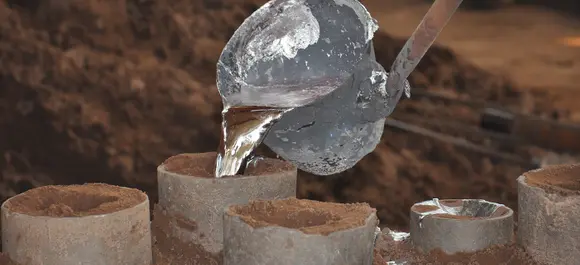Mobile:+86-311-808-126-83
Email:info@ydcastings.com
High-Quality Casting Solutions with 304 Stainless Steel for Various Applications
The Versatility and Advantages of 304 Stainless Steel Casting
304 stainless steel is one of the most commonly used stainless steel grades in various industries, known for its excellent corrosion resistance, high-temperature strength, and ease of fabrication. When it comes to casting, 304 stainless steel offers several advantages that make it the material of choice for a wide range of applications, from industrial components to consumer products.
What is 304 Stainless Steel?
304 stainless steel is an austenitic stainless steel alloy that consists primarily of iron, with a composition of approximately 18% chromium and 8% nickel. This specific combination of elements provides 304 stainless steel with remarkable properties, such as resistance to oxidation and corrosion, good mechanical properties at elevated temperatures, and excellent weldability. Due to these attributes, 304 stainless steel is widely utilized in environments where durability and hygiene are paramount, including food processing, pharmaceuticals, and marine applications.
The Casting Process
Casting is a manufacturing process where liquid metal is poured into a mold to create specific shapes and features. The casting of 304 stainless steel involves several methods, including investment casting and sand casting. Investment casting, or lost-wax casting, is particularly favored for creating intricate shapes with high precision, making it suitable for complex components in various industries.
Advantages of 304 Stainless Steel Casting
1. Corrosion Resistance One of the most significant benefits of 304 stainless steel is its ability to resist corrosion. This makes it an ideal choice for applications where components are exposed to environmental elements, chemicals, or moisture. The casting's surface can be treated to enhance its corrosion resistance further, ensuring longevity and reliability.
2. Strength and Durability 304 stainless steel maintains its strength at elevated temperatures, making it suitable for high-heat applications. Its durability ensures that cast components can withstand mechanical stresses without deforming or breaking. This reliability is essential in industries such as aerospace, automotive, and heavy machinery.
304 stainless steel casting

3. Ease of Fabrication Although 304 stainless steel is tough, it is relatively easy to work with. The material can be cast into complex shapes, allowing for innovative designs that meet specific requirements. Additionally, it can be easily machined and welded, facilitating further processing and assembly.
4. Hygienic Properties The smooth surface finish of 304 stainless steel makes it easy to clean, which is vital in industries such as food processing and healthcare. Stainless steel does not harbor bacteria or other pathogens, ensuring that cast components maintain high hygiene standards.
5. Aesthetic Appeal 304 stainless steel has a bright, attractive finish that makes it suitable for visible applications. Architectural features, kitchen equipment, and decorative items benefit from the sleek appearance of stainless steel casting, providing a modern look and feel.
6. Cost-Effectiveness While the initial cost of 304 stainless steel may be higher than other materials, its longevity and low maintenance needs make it a cost-effective choice over time. The resistance to corrosion means fewer replacements and repairs, leading to savings in the long run.
Applications of 304 Stainless Steel Casting
Given its numerous advantages, 304 stainless steel casting is utilized across various sectors. In the food industry, it is used for machinery parts, storage tanks, and piping systems. In the pharmaceutical sector, components such as valves and fittings are crafted from 304 stainless steel to ensure safety and reliability. Additionally, in architectural applications, it is employed to create visually appealing structures and fixtures that stand the test of time.
Conclusion
In conclusion, 304 stainless steel casting is an essential material that combines aesthetic appeal with mechanical strength and corrosion resistance. Its versatility allows it to be used in various sectors, making it an invaluable resource in modern manufacturing and design. As industries continue to innovate and evolve, the demand for high-quality materials like 304 stainless steel casting will only grow, ensuring its place at the forefront of engineering and product development. Whether for functional components or decorative elements, 304 stainless steel remains a prime choice for engineers and designers alike.
-
Why Should You Invest in Superior Pump Castings for Your Equipment?NewsJun.09,2025
-
Unlock Performance Potential with Stainless Impellers and Aluminum End CapsNewsJun.09,2025
-
Revolutionize Your Machinery with Superior Cast Iron and Aluminum ComponentsNewsJun.09,2025
-
Revolutionize Fluid Dynamics with Premium Pump ComponentsNewsJun.09,2025
-
Optimizing Industrial Systems with Essential Valve ComponentsNewsJun.09,2025
-
Elevate Grid Efficiency with High-Precision Power CastingsNewsJun.09,2025











